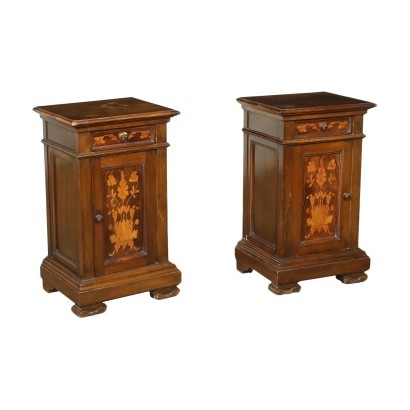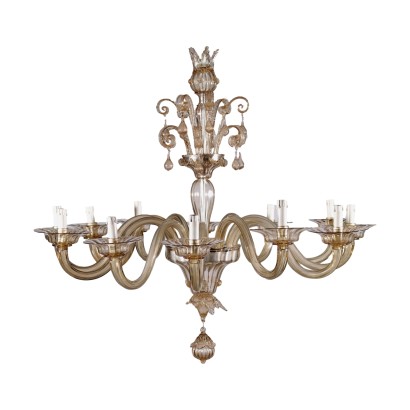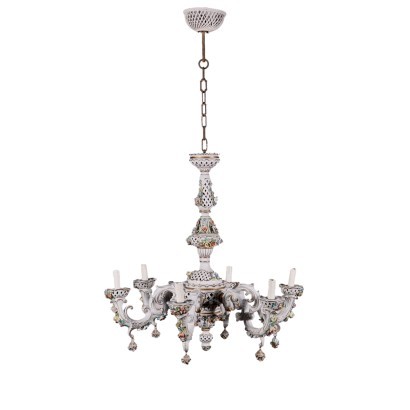Pair of Liberty Bedside Tables Walnut Oak Marple Italy 20th Century
Features
Style: Art Nouveau (1890-1920)
Age: 20th Century / 1901 - 2000
Origin: Italy
Main essence: Maple , Walnut , Oak
Description
Pair of Liberty bedside tables supported by curly shelf-shaped frontal feet. They have a frontal door sumounted by a drawer in the undertop band. Walnut with marple inlays,
Product Condition:
Fair condition. Wear consistent with age and use. Any damage or loss is displayed as completely as possible in the pictures. Product with a Certificate of Authenticity and Lawful Origin.
Dimensions (cm):
Height: 81
Width: 48,5
Depth: 39,5
Additional Information
Style: Art Nouveau (1890-1920)
Historical stylistic period formed from the end of the 19th century (c. 1890) after the Umbertino style and continued until the First World War.The current was characterized by the floral influence and the soft and curved lines, a typical example are the "whiplashes".
The first signs of this new era came from architects such as Hector Guimard (1867-1942) who built numerous buildings and hotels, but also from people such as Arthur Mackmurdo furniture designer and Arthur Liberty late 19th century London industrial and merchant who began to produce upholstery fabrics with floral motifs with soft and sinuous shapes.
The 1900 Paris Universal Exposition was an important point for the development and affirmation of Liberty in the following decade.
Liberty was called in different ways according to the nation, universally known as Art-Nouveau and it is thought that Arthur Liberty derives the name given in Italy to this beautiful stylistic current.
The name Art-Nouveau, on the other hand, is thought to derive from a shop located in Paris called Maison de l'Art Nouveau which began to show off furniture items with a new and innovative design in its windows.
With the end of the First World War, the naturalistic period of Liberty ended and the Art-Decò style emerged with more rigid and geometric lines.
Find out more about the Liberty style with our insights:
Art Nouveau: birth and development of a style
Milan Liberty between flowers and colors
The Liberty of Carlo Zen
Decorative forms and elegance in a Liberty lounge
FineArt: Eoloe Cupido, Liberty sculpture by Luca Madrassi
FineArt: Nymph and Faun, Art Nouveau sculpture by Giuseppe Siccardi
































